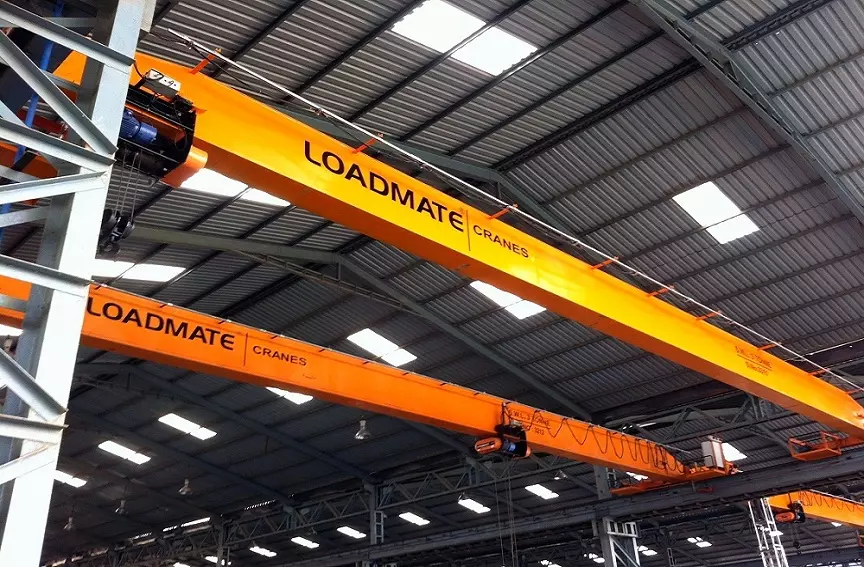When it comes to lifting devices, there might be instances where we feel that the overhead crane at our factory isn't performing to its potential. Maybe, its safety level is gradually decreasing as well. The balance might get disturbed, and you might not feel the same amount of confidence while operating t as you used to feel before. Whatever might be the symptom, overhead cranes can be subject to degradation after prolonged usage at the workplace. In such cases, its efficiency, as well as safety, might get compromised. Below the hook lifting devices is the answer to such problems as it helps the crane regain its efficient working and reinforces its safety level considerably.
What are below the hook lifting devices?
For many years, below the hook lifting devices have serviced warehouse operations and have become an integral part of material handling. It can be referred to as any tool that is typically designed to connect a load to a hoist or crane and secure that it can securely be lifted and moved. A below the hook device is generally used to lift loads that pose difficulties in handling traditional wires and ropes. Such devices usually include magnets, grapples, vacuum lifters, lifting beams, and other equipment specialized in handling overhead loads.
One can also design custom engineered devices as per their requirement. Often the manufacturer partners with their clients to design entirely new equipment suited to serve one or more specific purposes. Such devices can vary in their working principle. They can be mechanical, hydraulic, electronic, pneumatic, or a combination of all those. Its overall impact in securing the lofting and subsequent movement of the load is immense.
Basic components of below the hook equipment
Some of the common components of below the hook devices are explained below.
- Lifting lug – it is a point of attachment on lifting devices where rigging equipment is connected with hooks or shackles' help.
- Latch – Latches are devices used to hold any lifter in a closed or open position.
- Bail – Bail is the attachment point on any lifting devices where the crane hook can be engaged. The bails can be either pin styled or plate styled.
Why is using below the hook devices essential?
The reasons for using below the hook devices during lifting operations are quite simple, efficiency and safety. The device combined with rigging equipment or the crane would securely and effectively lift the load and move it as per requirement. This is applicable, especially when the traditional wire, rope, or sling doesn't suffice, and the setup looks vulnerable and inefficient. Sometimes the load doesn't conform to traditional forms and takes up unorthodox shapes, sizes, or weight. In such cases, manufacturers are often asked to design specific below the hook devices that would suit their purpose right.
- Efficiency
In most lifting operations, the load might be irregular in shape and size, and hence lifting and moving it using traditional wires or ropes can become very arduous and time-consuming. Rigging the load safely can take a much longer time than desired. Finding an apt spot to attach the sling to the load can be another difficult task. The lord's overall movement can also become slow due to these, and hence the efficiency of the operation decreases. Specifically designed below the hook devices come to the rescue in such instances where the best rigging solutions are provided at the least possible time.
Also, such devices can protect your equipment from getting damaged. For example, material sheets need protective equipment while lifting to prevent sharp edges from damaging the slings. But even when protection is added, the corners have the potential to cause further damage. It also increases the time required to move the load the operator operates more carefully. A specific below the hook device called sheet lifters would suit the scenario perfectly. They deploy claw-like structures to grab the sheets by their edges and lift them. This way, the equipment is protected from sharp corners, and the operation can be performed swiftly. Many such devices, such as vacuum lifters, magnet lifters, etc., assist in similar specific lifting requirements.
- Safety
As mentioned before, below the hook devices boost operational safety considerably. Traditional slings fail to secure the load while lifting, especially if the load is unique in its physical stature. If we fail to secure the sling, the load might shift while being lifted, resulting in potential safety hazards at the workplace. Equipment, as well as workers, would come at risk during the operation. Below the hook, devices supplement the traditional sling and strengthen its functionality. This eliminates the risk factor in the operation. These devices are specific to specific loads and lifting requirements. Hence it ensures the protection of the workers and the equipment from operational hazards.
Conclusion
It is the organization's duty, the managerial leaders, and the workers involved to ensure that heavy load lifting is performed with utmost precaution and effectiveness. Below the hook devices could be the best to supplement their efforts and enhance efficiency and safety in such operations.




